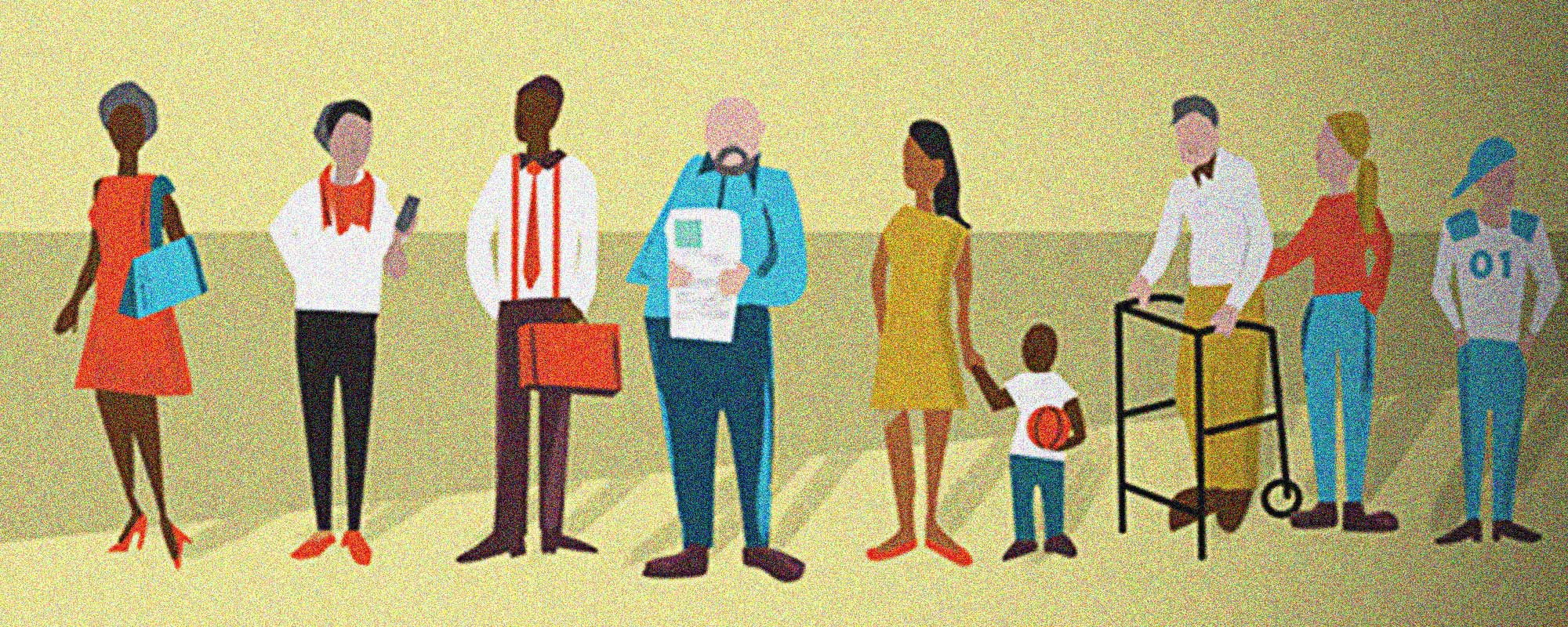Because the Learn section of TalkRights features content produced by CCLA volunteers and interviews with experts in their own words, opinions expressed here do not necessarily represent the CCLA’s own policies or positions. For official publications, key reports, position papers, legal documentation, and up-to-date news about the CCLA’s work check out the In Focus section of our website.
The federal and provincial governments strive to protect the rights of those with disabilities in Canada. Yet, to this day, there is no comprehensive Canada-wide legislation regarding disabilities. There are, however, federal statutes, provincial acts and codes and Supreme Court decisions designed to protect disability rights.
Included here is a brief overview of the legislation and case law regarding disability rights in the Canadian workplace.
General Protections
Throughout Canada, intentional discrimination by employers is forbidden. Intentional discriminations are sometimes called “direct” or “disparate treatment” discriminations. Courts have found that intentional discrimination includes not only where an employer acts hatefully against a person with a specific difference, but also includes where an employer acts out of stereotyped beliefs about an employee’s ability, even if the employer think their actions are best for the employee. Regardless of an employer’s numerous goals, if their act is found to have been based off false stereotypes, the act is discriminatory.[1]
Indirect discrimination is also prohibited in most provinces and under federal legislation. Indirect discrimination is a policy where exclusion is not expressly stated, but still has a negative effect on a specific group of people.[2] Some discriminatory workplace policies are legal when employers prove the policy’s necessity, often through a Bona fide occupational reason (BFOR).[3]
This liability of discrimination is not just restricted to employers, it may also apply to unions and other employees who refuse to accommodate. Law may require employees to change their practices accommodate disabled employees up until the point of undue hardship. Employees are forbidden under the Canadian Human Rights Act from harassing colleagues for their disability.[4] In addition, unions can be liable for lack of accommodation. For example, if a trade union refuses to make reasonable efforts to accommodate an employee’s disability, both the union and the employer may be liable for discrimination.[5]
Employer’s duty to accommodate
Every employer has a legal duty to reasonably accommodate their employees up to the point of “undue hardship.” When asked to accommodate by an employee, an employer must show that they promptly investigated the proposal and give the employee all the relevant information that will likely inform their decision. They must make similar accommodations to similar accommodation requests unless circumstances have changed from the earlier decision. The employer must also consider alternative accommodations different from what the employee requested. They are further required to consult with the employee and others whose input would be valuable for the decision-making process.[6]
The Supreme Court provided the general guidelines on an employer’s duty to accommodate:
- The overriding aim of employers must be to make their work rules as inclusive as possible;
- The employer must investigate the feasibility of alternative measures that do not have a discriminatory impact, such as individualized testing instead of group based exclusions
- The employer must generally adopt an alternative measure that achieves its business goals without having a discriminatory impact on an employee;
- The employer must investigate whether its business goals can be met by exempting protected workers or groups of workers from general work standards;
- The employer must investigate whether the job can be efficiently performed in a less discriminatory manner than the one initially selected by the employer;
- The employer must ensure that its work rules are designed to have the minimal discriminatory impact on employees consistent with meeting its business goals; and
- The employer must ensure that third parties, such as fellow employees, a trade union or customers or clients, have also searched for means of accommodating an employee.[7]
Duty of Employees:
Employees have a duty toward their employers. Employees must give employers all relevant information that would help their accommodation. For example, if an employer asks for medical information about an employee’s condition to help with accommodation, the employee must provide the information.[8] In addition, the employee must make reasonable efforts to work within the employer’s accommodation.[9]
Federal Legislation
The Canadian Charter of Rights and Freedoms guarantees equality before the law and equal benefit and protection under the law without discrimination.
Statutes and regulations that discriminate or negatively affect disabled people may not be valid under the Charter. Because of this, disabled employees who cannot often attend work can challenge statutory minimum service and seniority requirements for violating the Charter.
The courts have found that the Charter does not directly apply to employment contracts in the private sector. It also does not apply to contracts involving government agencies except when the government regularly and substantially controls the daily aspects of the agency.[10]
The Canadian Human Rights Act of 1977 bans discrimination when Canadians are employed by or receive services from:
- The federal government;
- First Nations governments; and
- private companies that are regulated by the federal government like banks, trucking companies, broadcasters and telecommunications companies.
The Act protects employees against harassment or discrimination based upon physical or mental disability.
The Employment Equities Act’s purpose is to achieve equality in the workplace so that no one will be denied employment opportunities or benefits for reasons unrelated to their ability. This means more than treating everyone equally and requires special accommodations for differences.
The Act defines persons with disability as people with a long-term or recurring physical, mental, sensory, psychiatric or learning impairment and who:
- consider themselves to be disadvantaged in employment because of that impairment, or
- believe that an employer or potential employer is likely to consider them to be disadvantaged in employment because of that impairment,
This includes people whose impairments have been accommodated in their current job.
The Act applies to all federally regulated employers with 100 or more employees, including any corporations working on behalf of Canada’s Government. It applies to the federal public administrations described in the Financial Administration Act, including the Canadian Forces and the Royal Canadian Mounted Police.
Unique provincial Laws
Quebec: The Act respecting equal access to employment in public bodies prevents discrimination in employment faced by women, handicapped persons, Aboriginal peoples, persons who are members of visible minorities and persons whose mother tongue is neither French nor English and who belong to a group other than the Aboriginal peoples group or the visible minorities group.
Newfoundland Labrador and Saskatchewan: These provinces have legislation that prevents employers from using hiring agencies that engage in discriminatory referral practices.[11]
For more information, please look to individual provincial and territorial laws:
Alberta:
- Alberta Human Rights Act, RSA 2000, c A-25.5
- Workers’ Compensation Act, RSA 2000, c W-15and Accompanying Regulations.
- Blind Workers’ Compensation Act, RSA 2000, c B-4
British Columbia:
- Human Rights Code, RSBC 1996, c 210
- Workers Compensation Act, RSBC 1996, c 492and Accompanying Regulations.
Manitoba:
- The Human Rights Code, CCSM c H175
- The Accessibility for Manitobans Act, CCSM c A1.7
- The Workers Compensation Act, CCSM c W200and Accompanying Regulations.
Newfoundland and Labrador:
- Human Rights Act, 2010, SNL 2010, c H-13.1
- Workplace Health, Safety and Compensation Act, RSNL 1990, c W-11and Accompanying Regulations.
New Brunswick:
Nova Scotia:
- Human Rights Act, RSNS 1989, c 214
- Workers Compensation Act, SNS 1994-95, c. 10
- Employment Support and Income Assistance Act, SNS 2000, c. 27
Nunavut:
- Human Rights Act, SNu 2003, c 12
- Workers’ Compensation Act, SNu 2007,c.15and Accompanying Regulations.
Ontario:
- Human Rights Code, RSO 1990, c H.19
- Accessibility for Ontarians with Disabilities Act, 2005, SO 2005, c 11
Prince Edward Island:
- Human Rights Act, RSPEI 1988, c H-12
- Workers Compensation Act, 2000 PESCAD 28and Accompanying Regulations.
Quebec:
Saskatchewan:
- The Saskatchewan Human Rights Code, SS 1979, c S-24.1
- The Workers’ Compensation Act, 2013, SS 2013, c W-17.11and Accompanying Regulations.
[1] Québec (Commission des droits de la personne et des droits de la jeunesse) v. Montréal (City), [2000] S.C.J. No. 24, [2000] C.L.L.C. para. 230-020at 145,233 (S.C.C.); Holloway v. MacDonald (1983), 83 C.L.L.C. para. 17,019at 16,149 (B.C. Bd. Inq.).
[2] Canadian Human Rights Act, R.S.C. 1985, c. H-6, s. 10(a).
[3] British Columbia (Public Service Employment Relations Commission) v. British Columbia Government and Service Employees’ Union, [1999] S.C.J. No. 46, [1999] 3 S.C.R. 3 (S.C.C.).
[4] W. Winkler & P. Thorup, “A Duty of Accommodation and Its Implications for the Employer” (1992) 1 C.L.L.J. 209 at 231-32
[5] O.P.E.I.U., Local 267 v. Domtar Inc. (No. 4) (1990), 12 C.H.R.R. D/161 (Ont. Bd. Inq.), affd [1992] O.J. No. 555 (Ont. Div. Ct.).
[6] British Columbia (Public Service Employee Relations Commission) v. British Columbia Government and Service Employees’ Union, [1999] S.C.J. No. 46, [1999] 3 S.C.R. 3 at 37.
[7] British Columbia (Superintendent of Motor Vehicles) v. British Columbia (Council of Human Rights), [1999] S.C.J. No. 73, [1999] 3 S.C.R. 868 at 882 (S.C.C.); British Columbia (Public Service Employee Relations Commission) v. British Columbia Government and Service Employees’ Union, [1999] S.C.J. No. 46, [1999] 3 S.C.R. 3 at 36-37 (S.C.C.).
[8] Metsala v. Falconbridge Ltd., Kidd Creek Division, [2001] O.H.R.B.I.D. No. 3, [2001] C.L.L.C. (Ont. Bd. Inq.).
[9] Handfield v. North Thompson School District No. 26, [1995] B.C.C.H.R.D. No. 4, 95 C.L.L.C. para. 230-015 at 145,168 (B.C. Council).
[10]R.W.D.S.U., Local 580 v. Dolphin Delivery Ltd., [1986] S.C.J. No. 75, 87 C.L.L.C. para. 14,002; Lavigne v. Ontario Public Service Employees Union, [1991] S.C.J. No. 52, 81 D.L.R. (4th) 545(S.C.C.).
[11] (NL) Human Rights Act, 2010, S.N.L. 2010, c. H-13.1, s. 14(3); (SK) Saskatchewan Human Rights Code, S.S. 1979, c. S-24.1, s. 16(3.1).
About the Canadian Civil Liberties Association
The CCLA is an independent, non-profit organization with supporters from across the country. Founded in 1964, the CCLA is a national human rights organization committed to defending the rights, dignity, safety, and freedoms of all people in Canada.
For the Media
For further comments, please contact us at media@ccla.org.




